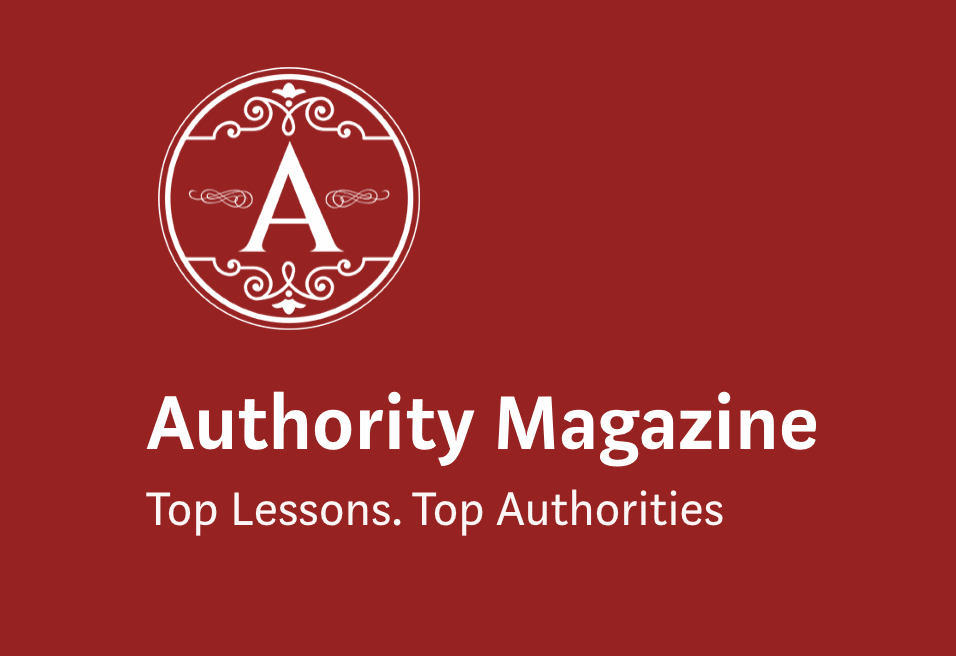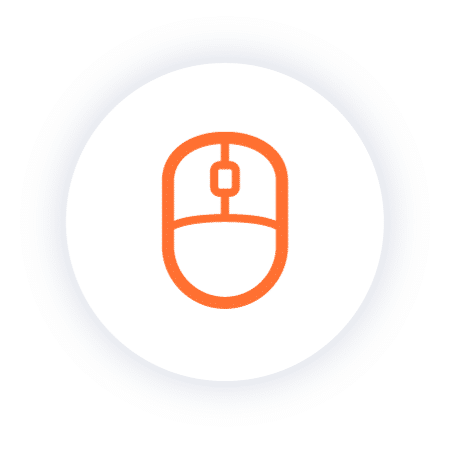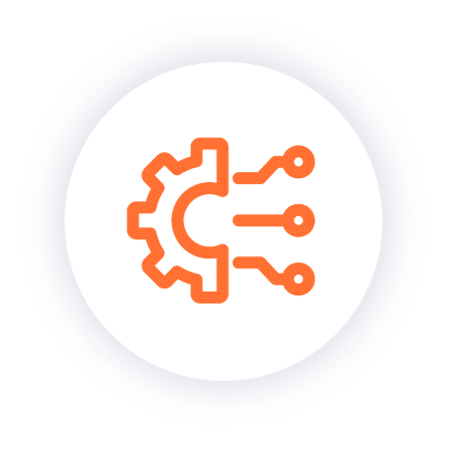With more than twenty years of experience across enterprise software, end user computing, mobile, and database software, Amitabh co-founded Workspot with Puneet Chawla and Ty Wang in August 2012. Prior to Workspot, Amitabh was the General Manager for Enterprise Desktops and Apps at Citrix Systems. Amitabh has a Ph.D. in Computer Science from the University of Illinois, Urbana-Champaign.
Thank you for making time to visit with us about the topic of our time. Our readers would like to get to know you a bit better. Can you please tell us about one or two life experiences that most shaped who you are today.
In2000, I was the co-founder and Chief Architect of a company creating a platform to build mobile applications. This was before 3G and smartphones. Everyone (correctly) believed that mobile was the next big thing. We had customers who built stock trading, banking, and e-commerce applications with our platform. I had a conversation with our marketing team at that time expressing my view that the user experience of those applications was terrible (mostly due to the state of wireless technology at that time), and that I personally wouldn’t use any of them. They laughed and said luckily I wasn’t their target user, assuring me that we would be successful with that demographic. They were proven wrong over the next 24 months. User experience is everything. After that experience, I no longer just wrote code — my passion became solving issues from an end user perspective.
Let’s zoom out. What do you predict will be the same about work, the workforce and the workplace 10–15 years from now? What do you predict will be different?
A decade ago, Marc Andreesen said “Software is eating the world”.
We have seen the increasing importance of software in every sector. But right now, there just aren’t enough software engineers in the world for software to “eat the world”.
Over the next 10–15 years, we’ll see some big differences develop that affect the workplace as well as the customer experience, including:
- Anyone will be able to create applications using no-code or low-code tools.
- A larger fraction of each graduating class will be proficient in writing software.
- There will be many more locations around the world producing software engineers.
The outcome of this “democratization” of software development will be an accelerated pace of innovation that pushes forward the evolution of how and where work is conducted, as well as continually improving the experiences we offer to customers of goods and services.
What largely stays the same in 10–15 years is the relatively new acceptance that work is not a place; it’s something we do, and it can happen almost anywhere. Providing flexible work models will quickly become a non-conversation, because the personal and professional benefits for employees, as well as the productivity and loyalty benefits to businesses are so obvious that organizations that do not walk this path will be left behind.
What advice would you offer to employers who want to future-proof their organizations?
Future-proofing your organization begins by aligning business goals with IT capabilities. Technology is the driving force behind organization success today, and CIOs bear much greater responsibility for overall business success than ever before. IT and business leaders must have a clear, mutual understanding of where the business is headed in the coming years and decipher whether their current IT infrastructure can support these goals.
As remote work continues to rise in popularity, so will the adoption of technologies that support easy, seamless and highly secure end user computing. This includes the use of Cloud PCs that are deployed across multiple public clouds. Because the compute power is centralized in the cloud, end users always have access to the latest technology as the cloud providers embrace it. This “evergreen” approach to end user computing ensures that new technology can be easily embraced, producing business benefits that may not have been possible previously. Additionally, cloud providers continue to invest heavily in security and ransomware prevention, helping to fortify organizations’ security postures. Equipping end users with evergreen technology that improves security and productivity helps take the organization into the future, prepared for whatever comes next.
What do you predict will be the biggest gaps between what employers are willing to offer and what employees expect as we move forward? And what strategies would you offer about how to reconcile those gaps?
The biggest divide today between employee and employer priorities is the constant battle of whether to return to the office. Some traditionalist business leaders believe — contrary to the data we’ve seen during the pandemic — that remote work decreases productivity and hinders collaboration, leading them to establish return to office policies. However, this is becoming an obstacle for recruiting and retaining talent. Nowadays, remote work capabilities are just as critical as other benefits, with nearly 50% of US workers admitting that they’d take a pay cut if it meant they could keep working from home. We are already seeing the “consumerization of work” which puts employees in the driver’s seat for what work looks like and where it will be conducted. Especially as Gen Z enters the workforce en masse, an approach that requires in-office work or “earning” the right to work remotely becomes dangerous territory, because the best talent will simply seek employment elsewhere as work-model flexibility becomes the norm. The consensus across the workforce currently is that flexibility is key, and employers need to provide options for a hybrid work model at a minimum. Retaining top talent without remote work options will be an uphill battle.
The reality is that hybrid and remote work models have increased employee productivity, while also helping companies attract top talent anywhere and everywhere, according to 76% of IT leaders. But for remote work to be effective, companies need solutions that are reliable, secure and scalable. Traditional virtual desktop infrastructure (VDI) and physical PCs cannot keep up with the complex requirements enterprise have today.
Many businesses are finding that reconciling this divide can start with their digitization strategies — more specifically, choosing solutions like Cloud PCs. We’re currently hearing many of our customers pose the question, “how can I verify my employees are productive remotely?” Although there is no single answer, productivity begins with a set of solutions that can provide secure access to the right people, at the right time while delivering the performance needed to complete their tasks.
Ensuring employee productivity in the hybrid world should also include a sophisticated monitoring system that can help employers piece together what may be impacting productivity. Productivity is not only about what employees are doing with their time but also about detecting potential computing issues causing latency. For example, Workspot’s innovative Cloud PC platform includes sophisticated monitoring and big data analysis tools that provide continuous observability to IT teams, helping them uncover patterns that could indicate a brewing problem, root cause analysis to help quickly troubleshoot an issue, and blast radius data to determine how many users are affected. Comprehensive visibility into Cloud PC behavior as well as adjacent systems is key to proactively anticipating and mitigating computing issues.
We simultaneously joined a global experiment together last year called “Working From Home.” How will this experience influence the future of work?
In the aftermath of the pandemic, the future of work will be impacted from both a human and an organizational standpoint. The global “Working from Home” experience has permanently blurred the lines between work and play, leading organizations to shift their strategies toward building a hybrid business.
- From the human standpoint, many employees struggle to set boundaries — and if they aren’t careful, this can very quickly lead to burnout. New collaboration technologies are supporting the connectivity and productivity of employees, and now it is time for organizations to create policies that address taking care of their employees’ well-being at home. This requires leaders to not only provide employees with new technology tools, but also reevaluate company culture.
- From an organizational perspective, leaders need to address the needs of today’s hybrid employees and hybrid businesses by reassessing their infrastructure approach. While many forward-thinking companies are focused on the next big tech trend, it is critical to consider how legacy and current technologies are interacting and the purpose they serve for both the business and the employee. Providing the best remote experience with overarching business goals in mind will help companies maintain a competitive edge.
We’ve all read the headlines about how the pandemic reshaped the workforce. What societal changes do you foresee as necessary to support a future of work that works for everyone?
If the dramatic shift to remote work throughout the pandemic has taught us one thing, it’s that the future of business operations is in the cloud. Companies who prioritized a proactive, modernized IT strategy pre-pandemic were prepared to rapidly adapt to support widespread remote work adoption.
As we approach 2023 and reflect on the unprecedented nature of the past few years, business leaders across all industries must reevaluate their IT infrastructure. Understandably, some companies will not be able to switch to a fully remote environment — this is especially true for those in the automotive and manufacturing industries. However, even in industries that require some level of in-person collaboration, organizations should ask themselves whether certain tasks can be automated or simplified through an IT solution to maximize efficiency. Gone are the days of storing company resources in manilla folders on-premises.
What is your greatest source of optimism about the future of work?
The pandemic propelled us to completely transform the way we work, essentially overnight. This illustrates that the workforce is capable of rapid, radical change. In fact, for many companies who were well prepared, COVID was minimally disruptive to business operations. For example, because of their preparedness, our customer Mead & Hunt was able to support a fully remote workplace in a matter of days when the initial pandemic outbreak occurred. They issued companywide Workspot licenses, ordered laptops on a Friday and were fully available — virtually — that next Monday morning. As a result, the company expanded from 60 remote employees to 260 in one business day. While other companies didn’t know where to begin, Mead & Hunt’s proactive approach afforded them a smooth, painless transition, saving them money, preserving business continuity and most importantly, providing a way for employees to continue working safely.
As a CEO, it has been incredibly exciting to witness the countless remote work success stories. A complete transformation of the workforce has never been performed on such a universal, global scale. This elasticity not only fills me with optimism, but makes me wonder — how far can we go with this experiment? What else are we capable of with the right technology?
Our collective mental health and wellbeing are now considered collateral as we consider the future of work. What innovative strategies do you see employers offering to help improve and optimize their employee’s mental health and wellbeing?
While working remotely does allow employees to handle personal matters with more flexibility throughout the workday, work life can very easily flood into one’s personal life if boundaries are not clearly defined.
When it comes to the mental health and well-being of employees, business leaders mustn’t forget that even small efforts can go a long way. This approach is critical for building a robust remote/hybrid corporate culture. For example, at Workspot, once a month each team chooses a day to take off outside of their standard PTO time. It’s a small way of saying that we acknowledge that work is not your entire life, and that it is important to unplug and enjoy life whenever possible.
When your team has the ability to work from anywhere, the question often becomes “how can we really “force” people to unplug from work?” Many employees need to be compelled by their employer to take time off. This needs to be enforced by the company, with leaders setting a clear example for establishing boundaries. Remember — a burned out employee is ultimately far less productive than an employee who strikes the right balance between work and play.
It seems like there’s a new headline every day. ‘The Great Resignation’. ‘The Great Reconfiguration’. And now the ‘Great Reevaluation’. What are the most important messages leaders need to hear from these headlines? How do company cultures need to evolve?
As new workplace challenges evolve, so will the headlines. The reality is, no matter what the next trend or headline is, maintaining a competitive advantage requires business leaders to put their people first.
Employees today view remote work capabilities as an extension of their benefits. In fact, according to Workspot’s 2022 State of Remote Work report, 76% of IT leaders agree that providing remote work opportunities helps them attract and recruit top talent. Top talent will continue to flock to companies who allow this flexibility and provide them with the tools to do their job anywhere, while organizations that stick to past strategies will be left behind.
Let’s get more specific. What are your “Top 5 Trends To Track In the Future of Work?”
1. Work from anywhere is not the future, it is today.
In today’s distributed world, businesses can create a global resource pool within the same company. Organizations are betting on unified cloud platforms that allow employees from across the world to smoothly collaborate on a project. This requires a complete digital transformation — companies who fail to move all assets to the cloud risk detrimental latency, security and storage issues.
2. Employers will continue to find new ways to ensure remote productivity.
As remote work capabilities continue to expand, we will likely witness a trend of employers looking to monitor and track employee productivity. We will see organizations tracking trends related to cloud health, which will help proactively mitigate IT issues or potential security breaches before they threaten productivity.
3. Gen Z is entering the workforce in full force.
Gen Z will be known as the hybrid work generation. For many young employees who attended college or worked their first internship throughout the pandemic, the hybrid work model is their reality. As more of this demographic enters the workforce, they will continue to lead the charge in advocating for remote and hybrid policies.
4. Software development will become increasingly democratized.
Now more than ever, software engineers are in high demand. Over the next decade, software development tools will become more accessible and intuitive, accelerating innovation and remote work capabilities across all industries.
5. Choosing the right tools today to address future challenges will be critical.
It is time for leaders to invest in technologies that will provide a clear path for agility and growth to help achieve future business goals. As leaders begin IT budget planning for 2023, they must determine what steps to take first, whether that is full migration, a staggered approach or incremental transformation.
I keep quotes on my desk and on scraps of paper to stay inspired. What’s your favorite “Life Lesson Quote”? And how has this quote shaped your perspective?
One of the funniest books I’ve read is called The Hard Thing About Hard Things by Ben Horowitz. One section of the book really stood out to me. This is not so much as a quote, but a mantra — when Horowitz asked the CEOs of the best companies what made them successful, the answer was not strategy, people, or anything like that — it was just “I didn’t quit.”
There is a fine line between madness, and not quitting when things get tough, which is a life lesson I always come back to.
We are very blessed that some of the biggest names in Business, VC funding, Sports, and Entertainment read this column. Is there a person in the world, or in the US, with whom you would love to have a private breakfast or lunch, and why? He, she, or they might just see this if we tag them.
I’d enjoy having lunch with Steph Curry. I’m fascinated that one individual can completely change the way a sport is played.
Our readers often like to continue the conversation with our featured interviewees. How can they best connect with you and stay current on what you’re discovering?
To learn more about what we are doing at Workspot you can follow me on Twitter and LinkedIn. Discover more about the real-world benefits of Cloud PCs at Workspot.com.



